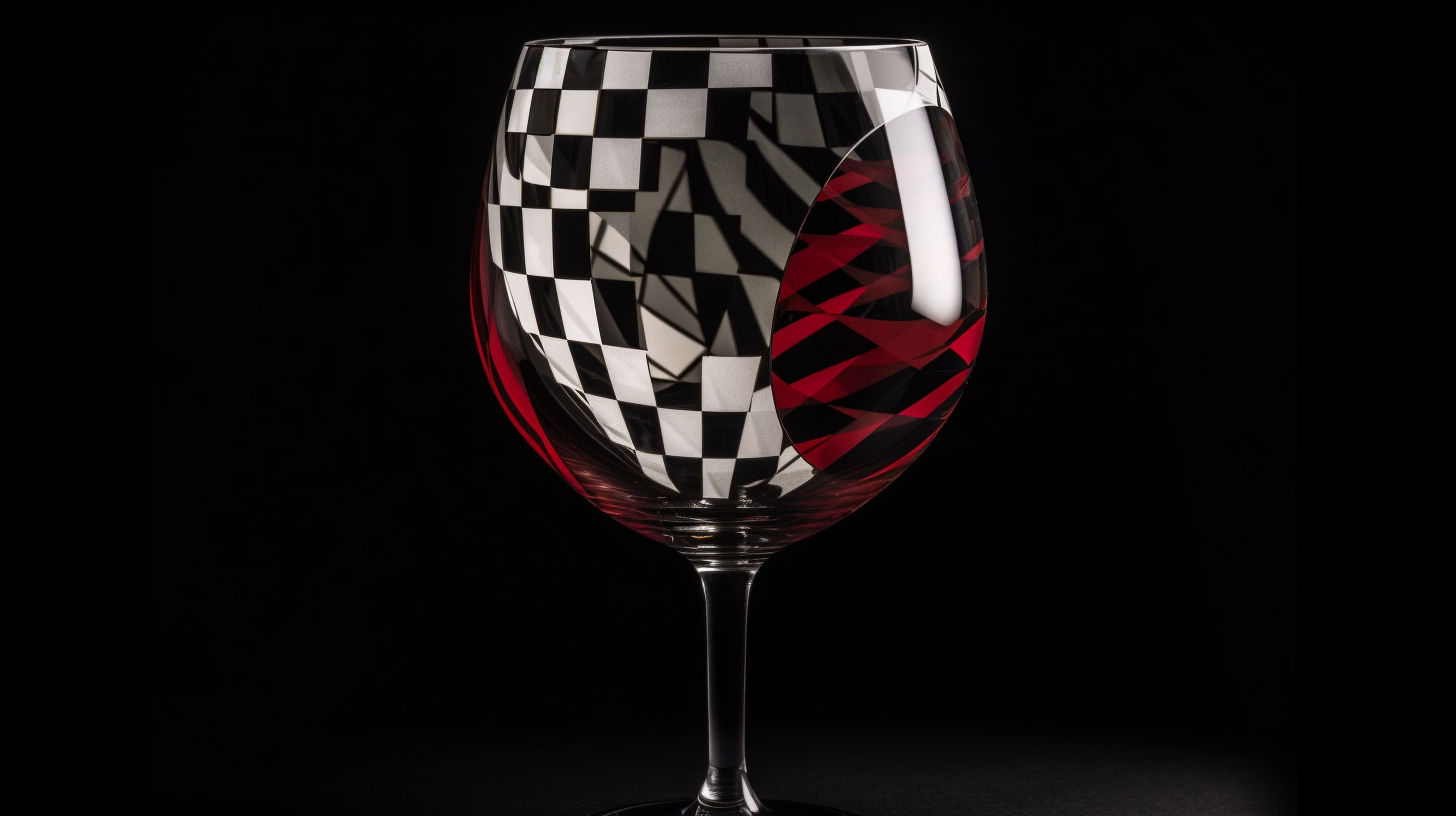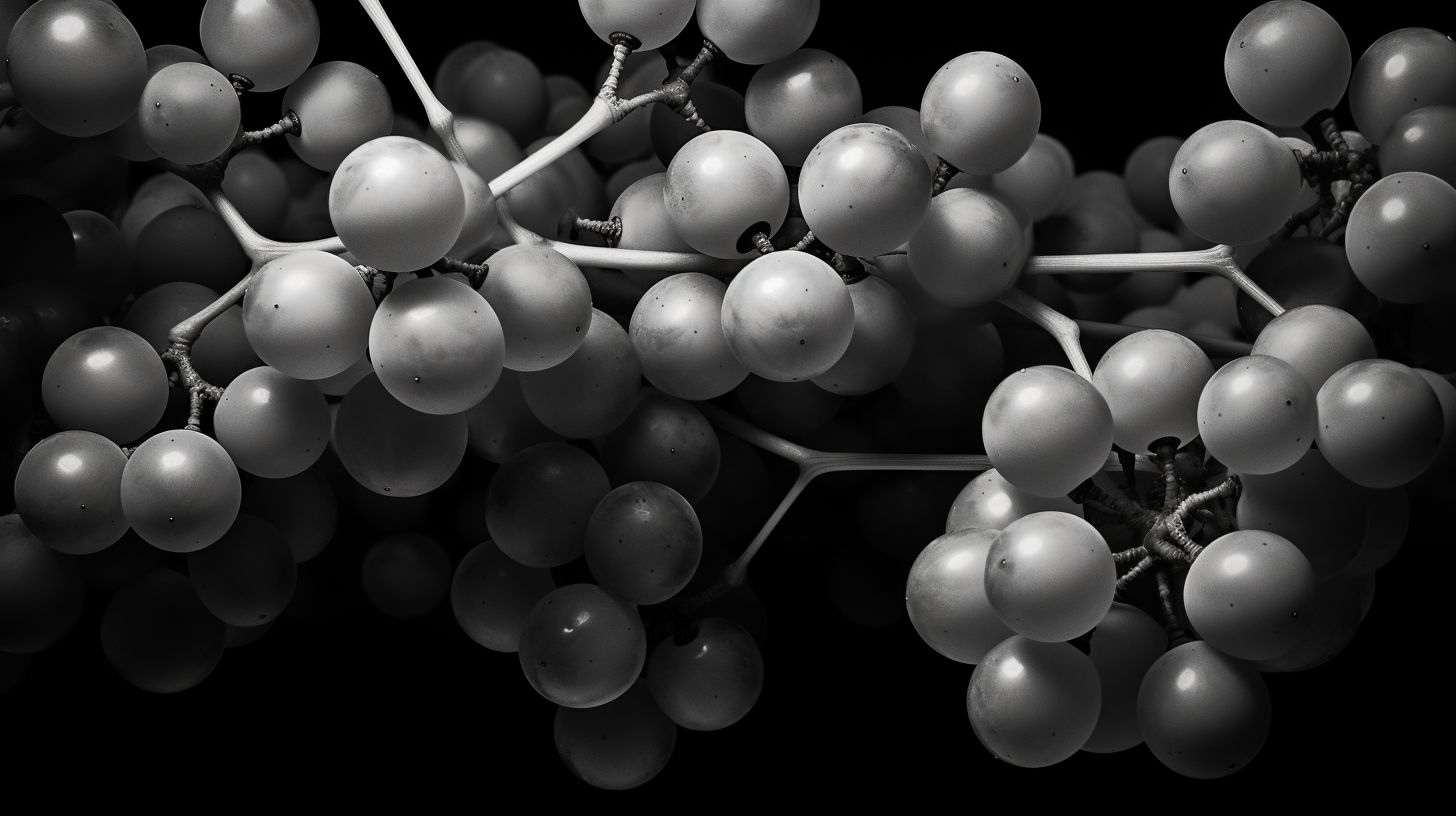As a wine enthusiast and follower of a low-carb lifestyle, I’ve always been curious about the carb content in wine. In this essential guide, we’ll delve into the world of carbs in wine, exploring different types of wines and their impact on our health and weight management. Join me as we uncover the truth about carbs in wine, learn which wines have lower carb content, and discover the benefits of choosing red wine. Get ready to sip and savor while staying carb-conscious!
Carbs: What Are They?
Carbohydrates are a type of macronutrient found in various foods and beverages, including wine. Understanding the role of carbohydrates in our physiology is essential to comprehending their impact on our bodies. In the context of wine, knowing the reality about carbs can help wine lovers make informed choices about their consumption and align their wine preferences with their dietary goals.
Physiology Background on Carbohydrates
One key aspect to understand about the physiological effects of carbohydrates is their impact on blood sugar levels. Carbohydrates, including those found in red and white wine, can cause an increase in blood sugar levels. This triggers the release of insulin, which helps lower blood sugar and store sugar as fat.
When we consume carbs, our bodies prioritize burning alcohol as fuel, which delays fat burning. Additionally, carbs inhibit converting fat back into sugar in fat cells, leading to the storage of sugar as fat and preventing the utilization of fat as an energy source. So, when considering the carbs in red wine or white wine, it’s important to be mindful of their potential impact on our blood sugar levels and overall metabolism.
The Reality About Carbs in Wine

I never realized how many carbs are in wine until I started researching the topic. It’s fascinating to learn about the reality of carbs in wine and how they can vary depending on the type and sweetness level. Here are some key points to consider:
- A glass of wine can have 0–4 grams of net carbs.
- Dry wines typically have less than 2 g/L of RS and ~0 carbs.
- Carbs in wine come from unfermented sugar, but they’re usually insignificant.
- Residual sugar (RS) contributes to the total carbohydrate in wine.
- Liqueurs often have added sugar.
Knowing the carb content in wine can help us make informed choices and enjoy our favorite glass of wine while staying mindful of our carb intake. Whether it’s a white or red wine, understanding the carbs in a glass of wine can help us maintain a balanced lifestyle. So, let’s raise our glasses and toast to the freedom of choice when it comes to enjoying our favorite wines!
Detailed Insights into Carbs in Wine
Let’s take a closer look at the detailed insights into carbs in wine. We’ll explore how many carbs are in a bottle or glass of wine, how to estimate the carbs in wine, and how to determine if a wine is high-carb. Additionally, we’ll discuss what to avoid when it comes to carbs in wine.
How many calories are in red wine? For more information on this topic, please read our article: Calories in Red Wine: What You Need to Know for a Guilt-Free Sip
How many carbs are in a bottle of wine?
Discussing the carb content in a bottle of wine provides valuable insights for wine lovers. The amount of carbs in red wine can vary depending on the type and sweetness level. Here are some key points to consider:
- The carb content in a bottle of red wine can range from 0 to 17 grams.
- Dry red wines generally have a lower carb content compared to sweet dessert wines.
- The carb content in a glass of red wine can be as low as 0 grams.
- Pinot noir, Cabernet Franc, Syrah, Merlot, and Cabernet Sauvignon are red wines with relatively low carb content.
- Burgundy tends to have the highest carb content among listed red wines.
Knowing the carb content in a bottle of red wine can help you make informed choices and enjoy your wine while staying mindful of your carbohydrate intake.
How many carbs are in a glass of wine?
Understanding the carbohydrate content in a glass of wine is essential for wine lovers who want to make informed choices about their carb intake. When it comes to red wine, the carb content can vary depending on the type and sweetness level. Generally, a glass of red wine contains 0-4 grams of net carbs. Dry red wines, like Pinot Noir, Cabernet Sauvignon, and Merlot, tend to have a lower carb content compared to sweet dessert wines.
It’s important to note that the carb content in red wine can also be influenced by the alcohol content. Opting for red wines with lower alcohol content can further reduce carbohydrate intake. So, if you’re watching your carb consumption, be mindful of the type and sweetness level of the red wine you choose to enjoy.
How to Estimate the Carbs in Wine
To accurately estimate the carbs in wine, I rely on a few key factors. Here are the steps I take to get an idea of the carb content in a glass of wine:

- Check the label: Look for information on the bottle that indicates the amount of carbs in the wine. Some labels may even provide a breakdown of the specific types of carbs present in the wine.
- Use a carb chart: Consult a reliable carb chart for wine to get a general idea of the carb content in different types of wine. This can help you estimate the carbs in white, red, and sparkling wine.
- Consider the sweetness: Sweeter wines tend to have higher carb content due to the residual sugar present. Dry wines, on the other hand, often have lower carb content.
- Know the serving size: Keep in mind that the carb content listed on the label or in a chart is usually based on a standard serving size of 5 ounces. Adjust your estimates accordingly if you’re drinking a larger or smaller glass of wine.
- Calculate for the whole bottle: If you want to know how many carbs are in a whole bottle of wine, simply multiply the carb content per serving by the number of servings in the bottle.
How Can You Tell If a Wine Is High-Carb?
Continuing from my previous discussion on estimating the carbs in wine, let’s delve into how you can determine if a wine is high-carb. When it comes to determining the carb content of wine, it’s important to consider the type of wine. Generally, dry wines tend to have lower carb content compared to sweet wines. For example, red wines like Cabernet Sauvignon, Pinot Noir, and Merlot are known to be keto-friendly due to their lower sugar and carb content.
On the other hand, wines such as Chardonnay, which is a white wine, can vary in carb content depending on factors such as the winemaking process. It’s essential to read labels and check for information on alcohol and sugar content to make informed choices. So, while some wines may be higher in carbs, there are still plenty of options available for wine lovers watching their carb intake.
What to Avoid
As we dive deeper into the topic of carbs in wine, it’s important to know what to avoid when it comes to managing your carb intake. Here are five things to steer clear of:
- High-carb white wines: Opt for dry white wines that have little to no residual sugar, as these tend to have lower carb content compared to sweeter white wines.
- Carbs in red wine: While red wine can be a good choice for low-carb diets, be mindful of the type and sweetness level. Dry red wines generally have lower carb content compared to sweet dessert wines.
- Glass of red wine: Keep in mind that the carb content can vary depending on the specific wine and serving size. It’s best to check the label for information on carbs in a glass of red wine.
- Carbs in rosé wine: Similar to white and red wines, the carb content in rosé wine can vary. Opt for dry rosé options to keep your carb intake in check.
- Beware of added sugar: Some wines, especially cheaper options, may have added sugar to enhance flavor or lower costs. Read the label and choose wines from reputable producers to avoid unnecessary carbs.
Where do carbs come from in wine?
Carbohydrates in wine primarily originate from residual sugar. Residual sugar refers to the unfermented sugar that remains in the wine after the fermentation process. The amount of residual sugar can vary depending on the type of wine and the winemaking process.
To give you an idea of the carb content in different types of wine, here’s a table:
| Wine Type | Carbs per 5 oz. serving |
|---|---|
| Red Wine | 0-4 grams |
| White Wine | 0-6 grams |
| Rosé Wine | 0-6 grams |
As you can see, both red and white wines can have varying carb content, with the range typically being 0–4 grams for red wine and 0–6 grams for white wine. It’s important to note that these numbers are approximate and can vary depending on the specific wine. So, if you’re watching your carb intake, it’s always a good idea to check the label or do some research to get a better idea of the carb content in the wine you’re consuming.
What’s Residual Sugar in Wine?
Residual sugar in wine refers to the unfermented sugar that remains in the wine after the fermentation process, adding sweetness and body to the final product. It’s what gives wine that delightful hint of sweetness that can vary between different types of wine. Here are five things to know about residual sugar in wine:
- Residual sugar contributes to the total carbohydrate content in wine, so it does contain carbs.
- The amount of residual sugar can vary depending on the wine, with dry wines usually having less residual sugar compared to sweet wines.
- Red wines generally have less residual sugar than white wines, but it’s still important to check the specific wine you’re drinking.
- The level of residual sugar can affect the overall taste and mouthfeel of the wine, adding depth and complexity.
- It’s always a good idea to check the nutrition label or do some research to find out how many carbs are in the specific wine you’re enjoying.
Nutritional Components in Wine
When it comes to wine, it’s important to consider not only the taste but also the nutritional components. One key aspect to consider is the calorie content of wine, as well as the amount of carbs, sugars, sodium, and potential vitamins and minerals it may contain. Understanding these nutritional components can help wine lovers make informed choices that align with their dietary needs and preferences.
Sugars
As we delve into the nutritional components of wine, let’s focus on the sugars present in this beloved beverage. When it comes to carbs in white wine, the amount can vary, but it’s generally low. A bottle of red wine can contain anywhere from 0 to 20 grams of carbs, depending on the specific wine. The carbs in a bottle of red wine come from the residual sugar left after fermentation. Port wine, in particular, tends to have higher carbs due to its sweeter nature. Here are some key points to keep in mind:
- Carbs in white wine can be minimal, making it a good low-carb option.
- The carb content in a bottle of red wine can vary, so it’s important to check the label.
- Port wine typically has a higher carb content compared to other wines.
- Dry wines generally have lower carb content compared to sweet wines.
- It’s important to consider portion sizes and total carb intake when enjoying wine on a low-carb diet.
Sodium
A glass of wine typically contains a negligible amount of sodium. Sodium is a mineral that is often associated with high blood pressure and other health concerns. However, when it comes to wine, sodium is not a significant nutritional component. In fact, the sodium content in wine is so low that it is usually not even listed on the nutrition label. This is great news for those who desire freedom in their dietary choices and want to enjoy a glass of wine without worrying about sodium intake. So, go ahead and indulge in a glass of your favorite wine, knowing that it won’t be adding any significant amount of sodium to your diet.
Vitamins & Minerals
I found that wine contains a variety of vitamins and minerals. Here are five nutritional components that can be found in wine:
- Vitamin C: Wine can contain a small amount of vitamin C, which is known for its antioxidant properties and immune-boosting benefits.
- Vitamin B6: Wine is a source of vitamin B6, which plays a crucial role in brain development and function, as well as the production of red blood cells.
- Potassium: Wine contains potassium, an essential mineral that helps regulate blood pressure, maintain proper hydration, and support muscle function.
- Magnesium: Wine provides a modest amount of magnesium, which is involved in over 300 biochemical reactions in the body, including energy production and bone health.
- Resveratrol: Wine, especially red wine, contains resveratrol, a powerful antioxidant that has been linked to various health benefits, including heart health and longevity.
These vitamins and minerals can contribute to the overall nutritional profile of wine, adding to its appeal for those seeking a well-rounded beverage option.
Antioxidants
One of the key nutritional components in wine is the presence of antioxidants. Antioxidants are molecules that help protect our bodies from damage caused by harmful free radicals. These free radicals can contribute to various health issues, including inflammation, heart disease, and aging. Thankfully, wine contains several antioxidants, such as resveratrol, quercetin, and catechins, which have been linked to numerous health benefits.
Resveratrol, in particular, has been studied for its potential to reduce the risk of cardiovascular diseases and certain types of cancer. It’s important to note that while wine can provide some antioxidants, it should be consumed in moderation as part of a balanced lifestyle. As always, it’s best to consult with a healthcare professional regarding your individual dietary needs.
Which Wines Contain the Most Antioxidants?
Antioxidants, those venerable guardians of health, are found in abundance in certain wines. The key lies in the skin of grapes, where these compounds, notably resveratrol, flourish. Red wines, by virtue of their production process involving prolonged skin contact, are often richer in antioxidants. Amongst these, Pinot Noir and Cabernet Sauvignon stand as paragons of antioxidant-rich wines. Their robust profiles not only delight the palate but also offer a cornucopia of health benefits.
Protein
Moving on to the nutritional components in wine, let’s delve into the protein content. While wine is not typically known for its protein content, it still contains some. Here are five things to know about protein in wine:
- Wine contains a small amount of protein, usually less than 1 gram per serving.
- The protein in wine comes from the grapes used in the winemaking process.
- Protein in wine contributes to its overall mouthfeel and texture.
- The protein content in wine varies depending on factors such as grape variety and winemaking techniques.
- While protein is not a significant component of wine, it adds to the overall complexity and enjoyment of the drink.
Composition and Nutrition in Wine
Wine, a libation as old as civilization itself, is more than just fermented grape juice. Its composition is a complex symphony of carbohydrates, sugars, and other nutrients. The carbohydrate content, primarily derived from residual sugars, varies significantly across different types of wine. Understanding this composition is crucial for those mindful of their carbohydrate intake.
Selecting the Right Wine
When it comes to selecting the right wine, there are a few key points to keep in mind. Firstly, if you’re looking for carb-friendly options, it’s important to choose wines that are fermented dry with low alcohol content. Secondly, it’s best to avoid off-dry or sweet wines, as they tend to have higher sugar content. Lastly, be cautious of value-driven or cheap wines that may have added sugar.

Looking for Carb-Friendly Wines?
When selecting a carb-friendly wine, it is important to consider the sugar and carb content in order to make a suitable choice for a low-carb or keto diet. Here are some tips to help you find the right wine:
- Look for dry wines: Dry wines typically have less than 2 g/L residual sugar and almost zero carbs.
- Opt for red wines: Red wines like Pinot Noir, Cabernet Sauvignon, and Merlot tend to have lower carb content.
- Check the alcohol content: Wines with higher alcohol content may have more sugar, so look for wines with lower alcohol content.
- Avoid sweet wines: Off-dry to sweet wines can have higher sugar content, so it’s best to steer clear of them.
- Consider premium wines from independent winemakers: These wines often fit keto criteria and are made with high-quality ingredients.
What To Drink
I recommend choosing a wine that aligns with your low-carb or keto lifestyle by considering the sugar and carb content. When selecting a wine, it’s important to prioritize your freedom and make choices that support your health goals. Look for dry wines that have little to no residual sugar, as these tend to have lower carb content. Red wines like Cabernet Sauvignon, Pinot Noir, and Merlot are great options for keto-friendly choices. Avoid off-dry or sweet wines, as they can have higher sugar content.
Additionally, be cautious of value-driven wines or cheap options, as they may have added sugar. Remember to check the alcohol and sugar content on the label and consider purchasing from smaller, independent winemakers who often produce premium wines that fit the keto criteria.
Lowest Carb Red Wine Options
For the red wine aficionado, seeking low-carb options need not be a Sisyphean task. Varieties such as Pinot Noir and Merlot offer a more modest carbohydrate profile while still providing a rich and satisfying experience.
Lowest Carb White Wine Options
White wines, often perceived as lighter alternatives, can also be low in carbs. Sauvignon Blanc and Chardonnay, when crafted with minimal residual sugar, present themselves as excellent choices for the carb-conscious.
Other Wine Types
Beyond the traditional reds and whites, other wine types like certain dry sparkling wines and rosés can also be low in carbohydrates, offering a diverse palette for exploration.
What Not To Drink
To make the right wine selection and avoid wines that are not suitable for a low-carb or keto lifestyle, it is important to consider the sugar and carb content. Here are five things to avoid when selecting wine:
- Sweet dessert wines: These wines tend to have higher sugar content and can derail your low-carb or keto diet.
- Off-dry wines: These wines may have residual sugar and can contribute to your carb intake.
- Cheap options: Value-driven wines and inexpensive choices may have added sugar to enhance flavor or lower costs.
- High-alcohol wines: Wines with higher alcohol content often have more sugar and carbs.
- Unclear labeling: Be cautious of wines that do not provide clear information about their alcohol and sugar content.
High-Carb Red Wine Options
Red wines such as Port, a fortified wine, and some Zinfandels with higher sugar content, are often higher in carbohydrates and might be less suitable for those monitoring their carb intake.
High-Carb White Wine Options
Dessert wines like Riesling and Moscato, known for their sweetness, naturally contain more carbohydrates.
Other Wine Types
Wines like certain sweet sparkling wines and late-harvest wines are also higher in carbs due to their increased sugar content.
Wine and Health
When it comes to wine and health, there are a few key points to consider. Firstly, can you stay healthy while drinking wine? Secondly, how does wine fit into a diet? Lastly, what are the guidelines for incorporating wine into a keto lifestyle? These are important questions to address in order to understand the role of wine in maintaining a healthy lifestyle.

Can You Stay Healthy While Drinking Wine?
Drinking wine can be part of a healthy lifestyle, as long as it is done in moderation and with awareness of its potential effects on health. Here are five ways you can stay healthy while enjoying your favorite glass of wine:
- Practice moderation: Enjoy wine in moderation, which means limiting your intake to one glass a day for women and two glasses a day for men.
- Be mindful of calories: Wine contains calories, so keep track of your overall calorie intake to maintain a healthy weight.
- Stay hydrated: Drink plenty of water alongside your wine to stay hydrated and prevent dehydration.
- Pair it with nutritious foods: Pair your wine with a balanced meal that includes fruits, vegetables, lean proteins, and whole grains to ensure you’re getting essential nutrients.
- Listen to your body: Pay attention to how your body reacts to wine and make adjustments accordingly. If you experience any negative effects, it may be best to limit or avoid wine altogether.
Wine on a Diet
I enjoy incorporating wine into my diet for its potential health benefits. Wine can be a great addition to a balanced and healthy lifestyle. When it comes to dieting, it’s important to make choices that align with your goals. Wine can be enjoyed in moderation while still maintaining a healthy diet. Opting for dry wines with low sugar content is a good choice for those watching their carb intake.
Red wines like Cabernet Sauvignon, Pinot Noir, and Merlot are keto-friendly options. It’s also important to check the alcohol and sugar content on the label, as some wines may have added sugar. By choosing quality wines and being mindful of your consumption, you can enjoy the benefits of wine while still staying on track with your diet.
Can I Still Drink Wine on a Low-Carb Diet?
Yes, with judicious selection. Opting for wines with lower residual sugar content can align with a low-carb diet.
Remember to Balance Your Diet
Moderation is key. Wine can be part of a balanced diet, but it should complement, not overshadow, your nutritional needs.
Wine and Keto Guide
One important factor to consider when following a keto diet is the carb content of wine. Here are some key points to keep in mind:
- Dry wines typically have less than 2 grams of carbs per liter and are usually carb-free.
- Liqueurs often contain added sugar, so they can be high in carbs.
- Distilled spirits like vodka, rum, and whiskey have zero carbs.
- Mixers for spirits can be sugary, so be mindful of added carbs.
- When choosing wine, opt for dry red wines like Cabernet Sauvignon, Pinot Noir, and Merlot, as they tend to have lower carb content.
What’s the keto diet?
The ketogenic diet is a high-fat, low-carbohydrate diet that has gained popularity for its potential health benefits, including weight loss.
Is wine keto?
In moderation, certain wines can fit into a keto diet. The key is to choose wines with lower carbohydrate content.
Best Keto and Low Carb Red Wine
Dry red wines, such as Cabernet Sauvignon and Pinot Noir, are generally more keto-friendly.
Benefits of Choosing Red
Red wines not only align with a keto diet but also offer antioxidants that contribute to overall health.
Which wines are keto?
Look for dry wines, both red and white, with low residual sugar content.
Where to buy keto wine?
Keto-friendly wines can be found at most wine retailers. Look for wines labeled as dry, or consult with a knowledgeable wine merchant.
Natural Wine
Natural wines, made with minimal intervention and often with lower sugar levels, can also be a good choice for those on a keto diet.

Vegan Wine Guide
Continuing the discussion on wine and health, let’s explore the topic of vegan wine and its impact on our well-being. Vegan wines are becoming increasingly popular among those who desire freedom in their dietary choices. These wines are made without the use of any animal-derived products, making them suitable for individuals following a vegan lifestyle.
To help you navigate the world of vegan wine, here is a table showcasing some popular vegan wine options:
| Wine Type | Description | Food Pairing |
|---|---|---|
| Sauvignon Blanc | Crisp and refreshing with citrus notes | Pair with salads or light seafood |
| Pinot Noir | Light-bodied with red fruit flavors | Enjoy with roasted vegetables |
| Cabernet Sauvignon | Bold and full-bodied with dark fruit flavors | Pair with grilled meats |
| Rosé | Dry and fruity with a hint of sweetness | Perfect for picnics and brunches |
These vegan wines not only offer a delicious and guilt-free drinking experience but also align with a plant-based lifestyle. Whether you are a vegan or simply looking to explore new wine options, vegan wines provide a wonderful opportunity to enjoy wine while staying true to your values. Cheers to your health and freedom of choice!
The Impact of Regular Wine Consumption
So, what are the long-term effects of drinking a bottle of wine every day? How does it impact our health? Can it lead to cirrhosis? These are important questions to consider when examining the impact of regular wine consumption. It’s essential to understand the difference between alcohol abuse and drinking in moderation, as well as the potential risks associated with excessive wine consumption over an extended period of time.
What Are The Long Term Effects Of Drinking A Bottle Of Wine Every Day?
Drinking a bottle of wine every day can have significant long-term effects on your health. Here are five possible impacts of regular wine consumption:

- Increased risk of liver damage: Excessive alcohol intake can lead to liver diseases such as fatty liver, alcoholic hepatitis, and cirrhosis.
- Weight gain: Wine is high in calories, and consuming a bottle every day can contribute to weight gain and obesity.
- Increased risk of certain cancers: Regular wine consumption has been linked to an increased risk of developing certain types of cancer, including breast, liver, and esophageal cancer.
- Negative impact on mental health: Excessive alcohol consumption, including wine, can lead to mental health issues such as depression, anxiety, and addiction.
- Impaired cognitive function: Long-term wine consumption can affect brain health, leading to memory loss, decreased cognitive function, and an increased risk of dementia.
It is important to drink alcohol in moderation and be mindful of its potential long-term effects on your health.
The Effects Of Drinking A Bottle Of Wine A Day For 10 Or 20 Years
Over the course of 10 or 20 years, regularly consuming a bottle of wine a day can have significant long-term effects on my health. While wine can be enjoyed in moderation, excessive consumption can lead to various health issues. Firstly, the high intake of alcohol can put a strain on my liver, leading to liver damage and an increased risk of liver disease. Secondly, regular wine consumption can contribute to weight gain and obesity, as wine is high in calories and can lead to overeating.
Additionally, it can increase the risk of developing certain types of cancer, such as breast, liver, and esophageal cancer. Lastly, long-term wine consumption can also negatively impact cardiovascular health, increasing the risk of high blood pressure and heart disease. It is important to remember that moderation is key and to prioritize my health when making choices about alcohol consumption.
Can Drinking A Bottle Of Wine Per Day Cause Cirrhosis?
Regular wine consumption, especially at the rate of one bottle per day, can potentially lead to the development of cirrhosis, a serious liver condition. This excessive intake of alcohol can have a detrimental impact on the liver over time. Here are five ways in which regular wine consumption can contribute to the development of cirrhosis:
- Continuous exposure to alcohol damages liver cells, leading to inflammation and scarring.
- The liver may struggle to break down alcohol efficiently, resulting in the accumulation of toxic substances.
- Alcohol can disrupt the balance of essential nutrients in the liver, impairing its ability to function properly.
- Chronic alcohol consumption can weaken the immune system, making the liver more susceptible to infections.
- Over time, excessive alcohol intake can cause irreversible liver damage, increasing the risk of cirrhosis.
It is important to be mindful of the potential risks associated with regular wine consumption and to drink alcohol in moderation to protect our liver health.
What Is Cirrhosis?
Cirrhosis, a term that echoes with foreboding, is a late stage of scarring (fibrosis) of the liver caused by many forms of liver diseases and conditions, such as hepatitis and chronic alcoholism. A liver scarred by cirrhosis cannot function properly, leading to a host of complications.
Understanding Drinking Patterns
My experience with wine lovers has taught me the importance of understanding drinking patterns and their impact on regular wine consumption. When it comes to enjoying wine, it’s crucial to have the freedom to make choices that align with your lifestyle and health goals. Drinking patterns can vary greatly from person to person, and it’s essential to be mindful of how much wine you consume on a regular basis. Regular wine consumption can have both positive and negative effects on your overall well-being.
While moderate wine consumption has been associated with certain health benefits, excessive or heavy drinking can lead to negative consequences. It’s important to find a balance that works for you, listening to your body and making choices that align with your personal values.

Difference Between Alcohol Abuse And Drinking In Moderation
When considering the impact of regular wine consumption, it is important to understand the difference between alcohol abuse and drinking in moderation. Here are five key points to keep in mind:
- Moderation allows for the enjoyment of wine without negative consequences.
- It is about finding a balance that fits your lifestyle and goals.
- Alcohol abuse can have serious physical, mental, and social implications.
- Drinking in moderation promotes responsible and mindful consumption.
- It is essential to listen to your body and make informed choices about your alcohol intake.
Understanding the difference between alcohol abuse and drinking in moderation empowers individuals to make choices that align with their values and desires for freedom. By maintaining a healthy relationship with wine, you can continue to enjoy its pleasures while prioritizing your well-being.
Warning Signs Of Drinking Too Much Wine
In the article ‘Carbs in Wine: The Essential Guide for Wine Lovers,’ let’s address the warning signs of excessive wine consumption and the impact it can have on individuals. It’s important to be aware of the potential consequences of drinking too much wine. Some warning signs to look out for include increased tolerance, cravings for wine, withdrawal symptoms when not drinking, neglecting responsibilities or relationships, and experiencing negative effects on physical and mental health.
Excessive wine consumption can lead to health issues such as liver damage, heart problems, weakened immune system, and increased risk of certain cancers. It can also contribute to weight gain, sleep disturbances, and impaired judgment. It’s crucial to listen to your body and be mindful of your alcohol intake to maintain a healthy and balanced lifestyle.
- Physical Signs: These may include lethargy, a yellowing of the skin (jaundice), and a noticeable decrease in appetite.
- Psychological Signs: Mood swings, irritability, and a general sense of mental unwellness can be telltale signs.
- Behavioural Signs: Changes in social behavior, neglect of responsibilities, and an increased focus on wine consumption can be red flags.
Must You Give Up Wine For Good?
Continuing the discussion from the previous subtopic, regular wine consumption can have a significant impact on one’s lifestyle and overall well-being. Here are five key points to consider:
- Wine can be enjoyed in moderation without giving it up completely.
- Finding a balance between indulgence and moderation is essential for maintaining a healthy lifestyle.
- Understanding the nutritional content of wine and its potential impact on your diet is crucial.
- Making informed choices about the type of wine you consume can help minimize the negative effects on your health.
- Incorporating other healthy habits, such as regular exercise and a balanced diet, can offset any potential negative impacts of regular wine consumption.
Practical Wine Knowledge
When it comes to practical wine knowledge, understanding the carb content of different types of wine is essential. Carb charts for 17 types of wine can provide valuable information on the amount of carbohydrates present in each variety. Additionally, it’s important to compare the carb content of wine to other types of alcohol to make informed choices while enjoying a glass of wine.
Carb Charts for 17 Types of Wine
I’m going to dive right into the carb charts for 17 types of wine, providing you with practical wine knowledge. Here are five types of wine and their carb content:
Chardonnay: 3.2g carbs
Sauvignon Blanc: 3.0g carbs
Pinot Grigio: 3.2g carbs
Riesling: 5.5g carbs (can vary widely depending on sweetness)
Cabernet Sauvignon: 3.8g carbs
Merlot: 3.7g carbs
Pinot Noir: 3.4g carbs
Zinfandel (Red): 4.2g carbs
Syrah/Shiraz: 3.8g carbs
Malbec: 3.8g carbs
Moscato: 8.0g carbs (can vary widely depending on sweetness)
Port (Fortified Wine): 20g carbs (varies widely)
Champagne/Sparkling Wine (Brut): 2.8g carbs
Prosecco: 3.8g carbs
Rosé: 5.0g carbs (can vary)
Sangria: 18g carbs (varies widely based on recipe)
Dry Vermouth: 4.4g carbs
These carb charts will give you the freedom to enjoy your favorite wines while maintaining a low-carb lifestyle.
How Wine Carbs Compare to Other Alcohols
Transitioning from the previous subtopic, let’s delve into the realm of comparing wine carbs to other types of alcohol, providing you with practical wine knowledge. When it comes to carbs, wine generally falls on the lower end of the spectrum compared to other alcohols. A typical glass of wine contains 0-4 grams of net carbs, with dry wines usually having less than 2 grams of residual sugar and almost no carbs. In contrast, distilled spirits like vodka, rum, and whiskey have zero carbs.
However, it’s important to note that mixers for spirits and liqueurs often contain added sugar, which can significantly increase the carb content. So, if you’re looking to enjoy a drink while keeping your carb intake in check, wine can be a good choice.
| Beverage Type | Label/Brand (Example) | Serving Size | Avg Carb Content per Serving | Avg Carb Content per Bottle |
|---|---|---|---|---|
| Wine | ||||
| Chardonnay | Generic | 5 oz (147 ml) | 3.2g | ~20g (750 ml bottle) |
| Cabernet Sauvignon | Generic | 5 oz (147 ml) | 3.8g | ~24g (750 ml bottle) |
| Riesling | Generic | 5 oz (147 ml) | 5.5g | ~35g (750 ml bottle) |
| Port | Generic | 3 oz (89 ml) | 20g | ~133g (750 ml bottle) |
| Beer | ||||
| Regular Beer | Generic | 12 oz (355 ml) | 13g | 13g (per can/bottle) |
| Light Beer | Generic | 12 oz (355 ml) | 5g | 5g (per can/bottle) |
| Stout | Guinness | 12 oz (355 ml) | 20g | 20g (per can/bottle) |
| Spirits (Plain) | ||||
| Vodka/Whisky/Rum/Tequila | Absolut/Jack Daniel’s/Bacardi/Jose Cuervo | 1.5 oz (44 ml) | 0g | 0g (750 ml bottle) |
| Mixed Drinks | ||||
| Margarita | Generic | 4 oz (118 ml) | 13g | N/A |
| Piña Colada | Generic | 6.8 oz (200 ml) | 32g | N/A |
| Mojito | Generic | 6 oz (177 ml) | 25g | N/A |
| Long Island Iced Tea | Generic | 8 oz (237 ml) | 33g | N/A |
| Cosmopolitan | Generic | 3.5 oz (103 ml) | 13g | N/A |
A Tip for Dining Out: 5 Advices
- As someone who enjoys dining out, I would like to share five helpful tips to enhance your experience.

- Explore new cuisines: Step out of your comfort zone and try different types of cuisine. Embrace the freedom to discover new flavors and culinary traditions.
- Indulge in local specialties: When dining out, seek out the local specialties or signature dishes. Immerse yourself in the regional culture and savor the unique flavors that make each place special.
- Enjoy the ambiance: Pay attention to the atmosphere of the restaurant. Whether it’s a cozy bistro or a trendy rooftop bar, let the ambiance enhance your dining experience and create a sense of freedom and relaxation.
- Engage with the staff: Interact with the restaurant staff, ask for recommendations, and show appreciation for their service. Building a connection with the staff can add a personal touch to your dining experience.
- Take your time: Slow down and savor each bite. Enjoy the freedom to fully immerse yourself in the flavors and textures of the food. Allow yourself to relax and enjoy the moment without rushing.
Editor’s Recommendations
I’m excited to share with you my top 10 recommendations for the best low carb wines to buy in 2023. These wines have been carefully selected based on their fermentation process, alcohol content, and sugar levels to ensure they fit into a keto-friendly lifestyle. Whether you’re a red wine lover or prefer a crisp white, there’s something on this list for everyone. So let’s raise a glass and discover some delicious low carb options!

20 Best Low Carb Wines to Buy in 2023
Researching the best low carb wines to buy in 2023 has been an exciting endeavor. As a wine lover who values freedom, I have discovered some fantastic options that will satisfy both my taste buds and my desire to maintain a low carb lifestyle. Here are my top recommendations:
- 2016 Pinot Noir – Domaine Dujac – Morey-St.-Denis, France: It is a light and elegant wine with notes of cherry, raspberry, and mushroom. It has a silky texture and a long, complex finish. It is a great choice for pairing with poultry or salmon.
- 2017 Barolo – Giacomo Conterno – Barolo, Italy: This wine is a rich and full-bodied wine with notes of prune, licorice, and tar. It has a long, complex finish. It is a great choice for pairing with pasta or risotto.
- 2021 Pinot Grigio – Santa Margherita – Alto Adige, Italy: This Pinot Grigio is a light and fruity wine with notes of pear, apple, and almond. It has a crisp, refreshing finish that makes it a great choice for summer
- 2020 Chardonnay – Rombauer – Napa Valley, California: Rombauer is a rich and full-bodied wine with notes of vanilla, oak, and apple. It has a creamy texture and a long, lingering finish.
- Brut Champagne by Moet & Chandon: This is a classic Brut Champagne that is made with Pinot Noir and Chardonnay grapes. It has a light, refreshing flavor with notes of citrus and apples.
- Brut Champagne by Veuve Clicquot: This is another classic Brut Champagne that is known for its high quality. It has a rich, complex flavor with notes of toast, honey, and brioche.
- Tawny Port – Taylor’s – Douro Valley, Portugal: – Tawny Port from Taylor’s is a rich and full-bodied wine with notes of raisin, prune, and fig. It has a long, complex finish. It is a great choice for pairing with dessert or cheese.
- 2022 Crémant de Bourgogne – Jean-Marc Brocard – Bourgogne, France: Jean-Marc Brocard is a sparkling wine made with Pinot Noir and Chardonnay grapes. It has a bright, acidic flavor with notes of citrus, apple, and brioche. It is a great choice for an aperitif or dessert.
- Rosé by Chateau Minuty: This is a rosé wine from Provence, France that has a slightly sweeter flavor than Whispering Angel, with notes of peaches, apricots, and melon.
- 2018 Cabernet Sauvignon – Opus One – Napa Valley, California: From Opus One, a classic example of the style, with full-bodied flavor, complex aromas of black currant, cassis, and cedar, and a long, lingering finish. It is a great choice for pairing with steak or lamb.
- 2022 Sauvignon Blanc – Cloudy Bay – Marlborough, New Zealand: Now this is a classic example of the style, with bright acidity and vibrant notes of citrus, grapefruit, and grass. It is a well-balanced wine that is perfect for pairing with seafood or salads.
- Sauvignon Blanc by Chateau Ste. Michelle: has a crisp, refreshing flavor with notes of citrus, grass, and minerals.
- Pinot Grigio by Santa Margherita: This is a Pinot Grigio from Italy that has a light, fruity flavor with notes of apples, pears, and honey.
- Cabernet Sauvignon by Napa Valley Cellars: This has a rich, full-bodied flavor with notes of blackberries, currants, and oak.
- Pinot Noir by Domaine Serene: This is a Pinot Noir from Oregon that has a light, elegant flavor with notes of cherries, raspberries, and mushrooms.
- sipping.
- Fino Sherry – Gonzalez Byass Tio Pepe – Jerez de la Frontera, Spain: This Fino Sherry from Gonzalez Byass is a dry, nutty wine with notes of almond, hazelnut, and saline. It is a great choice for sipping on its own or with tapas.
- Rosé by Whispering Angel: This is a rosé wine from Provence, France that has a light, refreshing flavor with notes of strawberries, watermelon, and citrus.
- 2022 Grüner Veltliner Smaragd – Weingut Bründlmayer – Kamptal, Austria: This Grüner Veltliner from Weingut Bründlmayer is a dry, crisp wine with notes of green apple, lime, and white pepper. It has a refreshing acidity and a long, mineral finish. It is a great choice for pairing with salads or seafood.
- Domaine Ferret Pouilly-Fuissé 2019: A dry white wine from Burgundy, France. Carb content are approximately 2-3 grams per glass. Beautiful crisp acidity and mineral notes, typical of the Pouilly-Fuissé appellation.
These wines provide a range of options for wine lovers who desire the freedom to enjoy their favorite drink while maintaining a low carb lifestyle. Cheers to finding the perfect low carb wine in 2023!
Frequently Asked Questions
Now, let’s address some frequently asked questions about carbs in wine. Are you concerned about your alcohol consumption and wondering if drinking a bottle of wine a day makes you an alcoholic? Curious about how alcohol consumption is measured and how much is considered too much? And for those watching their carb intake, you might be interested in the carb content of red and white wine. Let’s dive into these questions and get some answers.
Are You An Alcoholic If You Drink A Bottle Of Wine A Day
My understanding of the topic ‘Are You An Alcoholic If You Drink A Bottle Of Wine A Day (Frequently Asked Questions)’ is that people often wonder about the implications of consuming a bottle of wine daily in terms of alcoholism. Here are some key points to consider:
- Drinking a bottle of wine a day can be a cause for concern and may indicate a potential issue with alcohol consumption.
- Alcoholism is characterized by a dependence on alcohol and the inability to control or stop drinking.
- Regularly consuming a bottle of wine a day can lead to health problems, such as liver damage, addiction, and negative impacts on relationships and daily functioning.
- It is important to assess your relationship with alcohol and seek help if you are concerned about your drinking habits.
- Remember, freedom comes from making informed choices that align with your values and prioritize your well-being.
How Alcohol Consumption Is Measured
Continuing our exploration of alcohol consumption, let’s delve into how experts measure the amount of alcohol consumed. Alcohol consumption is typically measured in terms of standard drinks. A standard drink is defined as containing 14 grams (0.6 ounces) of pure alcohol. This measurement is used to provide a consistent way of comparing and tracking alcohol consumption across individuals and populations.
One standard drink is equivalent to approximately 1.5 ounces of distilled spirits, 5 ounces of wine, or 12 ounces of beer. It’s important to note that the alcohol content can vary between different types and brands of alcoholic beverages. To accurately measure alcohol consumption, it is recommended to use standardized measuring tools and to be aware of the alcohol content of the specific beverage being consumed.
How Much Is Too Much?
To determine if you are consuming too much alcohol, it is important to understand the recommended guidelines and the potential risks associated with excessive alcohol intake. Here are some frequently asked questions to help you gauge your alcohol consumption:
- How many drinks are considered too much?
| Gender | Moderate Drinking | Heavy Drinking | Excessive/Binge Drinking |
|---|---|---|---|
| Men | Up to 2 drinks per day | More than 4 drinks on any day or more than 14 per week | 5 or more drinks within 2 hours |
| Women | Up to 1 drink per day | More than 3 drinks on any day or more than 7 per week | 4 or more drinks within 2 hours |
- Standard Drink: In the United States, a standard drink contains about 14 grams of pure alcohol, which is found in 12 ounces of beer, 5 ounces of wine, or 1.5 ounces of distilled spirits.
What are the short-term effects of excessive alcohol intake?
- Impaired judgment and coordination
- Increased risk of accidents and injuries
- Risk of alcohol poisoning
- Nausea and vomiting
- Blackouts (memory lapses, where the drinker cannot remember events)
- Mood swings and aggressive behavior
What are the long-term risks of heavy drinking?
- Development of chronic diseases such as liver cirrhosis, pancreatitis, heart disease, and cancer
- Mental health issues including depression and anxiety
- Dependency or alcohol use disorder
- Cognitive impairments and memory problems
- Social and relationship problems
How does alcohol affect my overall health and well-being?
- Alcohol can affect almost every organ in the body. It can disrupt sleep, affect mental health, impair digestion, and weaken the immune system.
- Excessive drinking can lead to nutritional deficiencies and weight gain.
- It can also exacerbate existing health conditions and interact harmfully with medications.
What steps can I take to moderate my alcohol consumption?
Understanding the answers to these questions will empower you to make informed decisions about your alcohol intake and ensure that you are enjoying your wine in a responsible and healthy manner. Remember, freedom comes from knowledge and making choices that align with your personal values and goals.
- Set specific, realistic goals for reducing alcohol intake.
- Keep track of how much you drink and when.
- Avoid situations or triggers that encourage excessive drinking.
- Seek support from friends, family, or support groups.
- Consider professional help if self-management strategies are not effective.
Carb Content in 1 glass (5 Ounces/147ml) of Red Wine Type
As a wine lover, I am eager to delve into the carb content of different red wine types, specifically in one glass (5 ounces/147ml), to provide clarity for fellow enthusiasts. When it comes to red wine, the carb content can vary depending on the type and sweetness level. Generally, dry red wines have lower carb content compared to sweet dessert wines.
Red wine options with relatively low carb content include Pinot Noir, Cabernet Franc, Syrah, Merlot, and Cabernet Sauvignon, which range from 3.4 to 3.8 grams of carbs per 5-ounce serving. However, it’s important to note that Burgundy has the highest carb content among listed red wines, with 5.5 grams per serving. So, if you’re following a low-carb or keto diet, it’s best to opt for dry red wines with lower alcohol content to further reduce carb intake.
Carb Content in 1 glass (5 Ounces/147ml) of White Wine Type
In this section, I will discuss the carb content in 1 glass (5 ounces/147ml) of different types of white wine, addressing frequently asked questions. Here are some key points to consider:
- Dry white wines generally have fewer carbs compared to sweet wines.
- Sauvignon Blanc, Pinot Grigio, and Chardonnay are low-carb white wine options.
- The carb content in white wine can vary depending on the type and sweetness level.
- It’s important to check the label for alcohol and sugar content to make an informed choice.
- Value-driven wines and cheaper options may have added sugar, so be mindful of that.
Keeping Blood Sugar Levels Under Control While Drinking Alcohol on a Diabetic Diet
Continuing the discussion from the previous subtopic, let’s explore how to keep blood sugar levels under control while drinking alcohol on a diabetic diet, addressing frequently asked questions. When it comes to managing blood sugar levels while drinking alcohol on a diabetic diet, there are a few key strategies to keep in mind.
First, it’s important to monitor your alcohol intake and consume in moderation. Be mindful of the type of alcohol you choose, as some options may have higher sugar content. Opt for dry wines, such as Cabernet Sauvignon or Pinot Noir, which tend to have lower carbohydrate content. Additionally, avoid sugary mixers and opt for sugar-free options. Lastly, remember to check your blood sugar levels regularly and adjust your diabetes management plan as needed. By being mindful and making informed choices, you can enjoy alcohol while keeping your blood sugar levels under control on a diabetic diet.
Does Drinking White Wine Help You Lose Weight?
Drinking white wine can be a part of a weight loss plan. Here are some reasons why:
- Enjoying a glass of crisp, chilled white wine on a warm summer evening while socializing with friends.
- Savoring the delicate flavors of a dry, unoaked Chardonnay paired with a light seafood dish.
- Indulging in the aromatic notes of a refreshing Sauvignon Blanc as you unwind after a long day.
- Treating yourself to a glass of Riesling with its hint of sweetness, perfectly complementing a spicy Thai meal.
- Celebrating a special occasion with a flute of sparkling white wine, feeling the bubbles tickle your palate.
Drinking white wine can be a pleasurable addition to a weight loss journey, as long as it is done in moderation and fits within your overall calorie and carbohydrate goals. Remember, it’s about finding balance and enjoying life’s simple pleasures.
How Many Calories Are in Grapes?
As someone who is interested in the calorie content of grapes, you may be wondering how many calories are in this popular fruit. Grapes are a delicious and healthy snack option, and it’s important to understand their nutritional value. On average, a cup of grapes contains about 62 calories. However, the exact calorie count may vary depending on the variety and size of the grapes. It’s also worth noting that grapes are low in fat and sodium, making them a guilt-free choice for those watching their calorie intake. Whether you enjoy them as a standalone snack or add them to salads and smoothies, grapes can be a tasty and nutritious addition to your diet.
Sources
One reliable source of information on the carbohydrate content of wine is the nutritional label on the bottle. It provides a straightforward and accurate breakdown of the carbs you’ll be consuming. In addition to the label, there are several other sources you can turn to for information on carbs in wine:
- National Institute on Alcohol Abuse and Alcoholism (NIAAA): NIAAA Website
- Centers for Disease Control and Prevention (CDC) – Alcohol and Public Health: CDC Alcohol Information
- World Health Organization (WHO) – Alcohol: WHO Alcohol Information
- Mayo Clinic – Alcohol use: Mayo Clinic Alcohol Use Guidelines
- “The Resveratrol Content in Wine” – Journal of Wine Research
- “Carbohydrate Content in Wine” – Wine Spectator
- “Keto Diet and Alcohol” – Healthline
- “Understanding Cirrhosis of the Liver” – Mayo Clinic
- “The Psychological Effects of Alcohol” – American Addiction Centers
- Carbs in Wine: The Essential Guide for Wine Lovers” by Edible Healing
- “How many carbs are in a bottle of wine? by Healthline
- “How to Estimate the Carbs in Wine” by Wine Folly
- “How Can You Tell If a Wine Is High-Carb?” by Wine Enthusiast
- “What to Avoid” by MasterClass https://glassofbubbly.com/what-is-a-wine-masterclass/
- “Where do carbs come from in wine?” by Wine Spectator https://www.thestar.com/life/food-and-drink/how-to-figure-out-sugar-carbs-and-calories-plus-counts-for-5-wines-at-the/article_4070a035-4b4f-57d8-97dd-d354f85775b5.html
- “What’s Residual Sugar in Wine?” by Wine & Spirits https://winecurmudgeon.com/residual-sugar-in-wine-with-charts-and-graphs/
- “Nutritional Components in Wine” by Verywell Fit https://www.verywellfit.com/
- “Calories” by The United States Department of Agriculture https://fdc.nal.usda.gov/fdc-app.html#/food-details/173190/nutrients
- “Vitamins & Minerals” by Wine & Spirits https://www.winespectator.com/articles/are-there-any-vitamins-or-minerals-in-a-glass-of-wine-44190
- “Antioxidants” by Healthline https://www.facebook.com/AuthorityNutrition/posts/red-wine-is-rich-in-antioxidants-but-its-also-full-of-calories-from-alcohol-and-/1757403627753600/
- “Which Wines Contain the Most Antioxidants?” by Wine Enthusiast https://www.seccowineclub.com/which-wines-have-the-most-antioxidants/
- Protein” by Verywell Fit http://verywellfit.co/
- Looking for Carb-Friendly Wines?” by Wine Folly https://www.purewow.com/wine/keto-diet-wines
- “What To Drink” by Healthline https://www.purewow.com/wine/keto-diet-wines
- “Can You Stay Healthy While Drinking Wine?” by Harvard Health Publishing https://www.inc.com/bill-murphy-jr/a-massive-new-harvard-study-of-21000-people-says-drinking-1-glass-of-wine-each-day-leads-to-this-surprising-benefit.html
- “Remember to Balance Your Diet” by Masters of Wine https://m.youtube.com/watch?v=KU2OhZDUT2g
- “Is wine keto?” by The Keto Diet Blog https://www.yourstrulywine.com/can-you-drink-wine-during-a-keto-diet/
- “Benefits of Choosing Red” by Verywell Fit https://whitehalllane.com/10-health-benefits-of-drinking-red-wine-that-will-keep-you-healthy/
Thank you for all sources for all information they provide. With these sources at your disposal, you have the freedom to explore and educate yourself about the carbs in wine, allowing you to make informed choices that align with your dietary preferences and goals.
[ez-toc]







